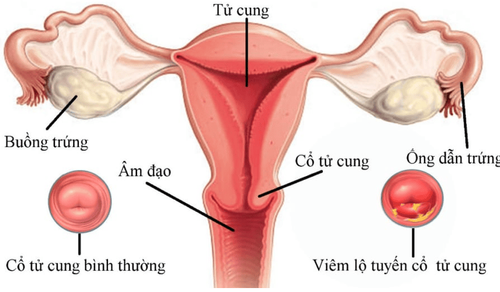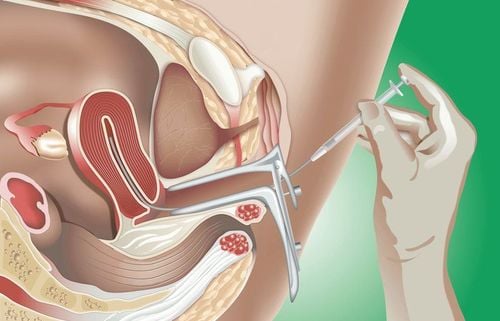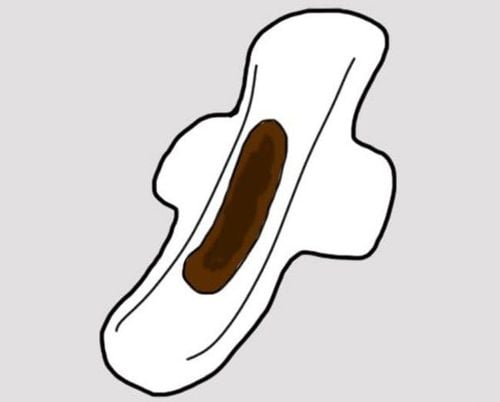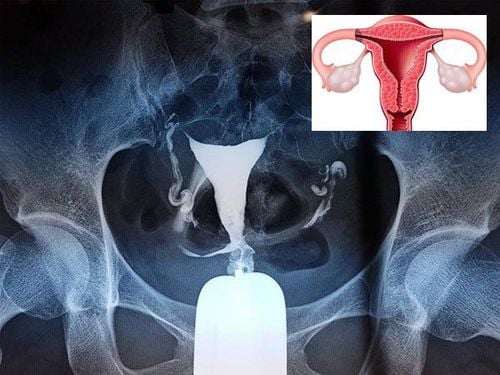This is an automatically translated article.
The article is professionally consulted by Master, Doctor Tran Lam Khoa - Department of Obstetrics and Gynecology - Vinmec Central Park International General Hospital.HSG is one of the most widely used imaging methods in detecting problems in the uterus and fallopian tubes. Based on this, many gynecological diseases in women are detected in time.
1. What is HSG?
Hysterosalpingography (HSG) or full name is a contrast-enhanced hysterosalpingogram. This is an imaging technique that uses X-rays to examine the inside of the fallopian tubes and uterus.HSG imaging is used to check and diagnose tubal occlusion (which can be partial or total). Besides, the results after the scan also support the detection of abnormalities related to the size and shape of the uterus. All of these factors have the potential to interfere with female fertility such as infertility/infertility.
2. When is it necessary to have an HSG (hysterosalpingogram) ?
Your obstetrician will order an HSG scan when you're having a hard time conceiving or you've had problems with your pregnancy (eg, multiple miscarriages). A contrast-enhanced hysterosalpingogram will then be performed to diagnose the cause of infertility.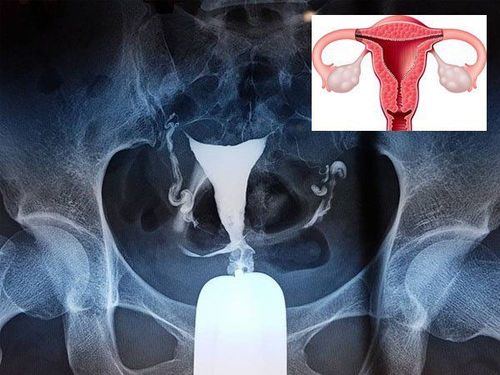
Chụp buồng tử cung vòi trứng có cản quang giúp chẩn đoán một số bệnh lý phụ khoa
Abnormalities in the structure of the uterus (which can be congenital or genetic). Fallopian tube blockage. Scar tissue in the uterus. Fibroids . Uterine tumor or uterine polyp. In addition, this diagnostic technique can be performed several months after tubal ligation surgery to ensure success.
3. Steps to prepare before taking HSG
Performing a hysterosalpingogram with contrast can be painful in some patients.Therefore, doctors will prescribe some over-the-counter pain relievers and patients need to take them about 1 hour before the scan. Besides, if the patient is too nervous, doctors will also prescribe a sedative to help them relax more. To prevent infection, antibiotics will also be prescribed before or after the HSG scan.

Bệnh nhân sẽ được bác sĩ tư vấn về kỹ thuật và được dùng thuốc giảm đau trước khi chụp
4. When is the right time to take HSG?
An HSG scan is usually done a few days to a week after the end of your period. This ensures that the patient is not pregnant and reduces the risk of infection during the procedure.Some of the following subjects are not assigned to take HSG:
Pregnant. Having a pelvic infection. There is severe uterine bleeding.

Phụ nữ mang thai thuộc nhóm đối tượng không nên chụp HSG
5. How does the HSG scan (hysterosalpingogram) take place?
Step 1: First, the patient will be asked to lie on his or her back and place the legs in the same position as the gynecological examination. Next, the doctor will insert an instrument (like a speculum) into the vagina to widen this area, making it easier to see the cervix. Along with that, the cervix will be cleaned. Step 2: Inject a local anesthetic in the cervix. Step 3: The doctor will insert the dye using one of two methods: using a catheter into the cervix or using a plastic tube with the tip of the tube inflated. Step 4: Remove the speculum from the vagina and insert the dye through the catheter. This fluid will drain into the uterus and fallopian tubes. This process can cause pain and cramping. Step 5: Start taking X-rays with specialized equipment. Step 6: During the scan, the patient may be asked to change positions to have different angles. Step 7: When the scan is complete, the doctor will remove the catheter from the vagina. Step 8: The patient will be prescribed appropriate drugs for pain relief and anti-inflammatory, anti-infective after the end of this procedure.6. Some risks when performing HSG
This hysterosalpingogram technique can cause some side effects such as:Vaginal bleeding and cramping. Dizziness, dizziness. Discomfort in the lower abdomen... However, in a small number of cases it is possible to cause: Allergic reaction to the dye. Infection of the fallopian tubes/endometrium if not handled well. Uterine trauma (eg, perforation)... Therefore, finding a reputable hospital to perform is necessary if you want accurate and safe imaging results.

Một số phụ nữ có thể gặp tình trạng hoa mắt trong khi chụp HSG
For HSG imaging technique, you can be completely assured that the procedure will be conducted with full procedures and standards, ensuring safety, and limiting post-procedure side effects.
Master, Doctor Tran Lam Khoa is trained and used to specialize in fetal medicine and prenatal diagnosis at Necker Hospital - Prenatal diagnosis center - Fetal intervention and treatment center France's largest. This is also the place where difficult and complicated diseases are concentrated with the world's leading professors of fetal medicine and fetal intervention. Currently, Doctor Khoa is working at Vinmec Central Park International General Hospital, he will directly diagnose, treat, and intervene in fetuses to bring healthy babies and bring happiness to parents. future mother.
Please dial HOTLINE for more information or register for an appointment HERE. Download MyVinmec app to make appointments faster and to manage your bookings easily.




